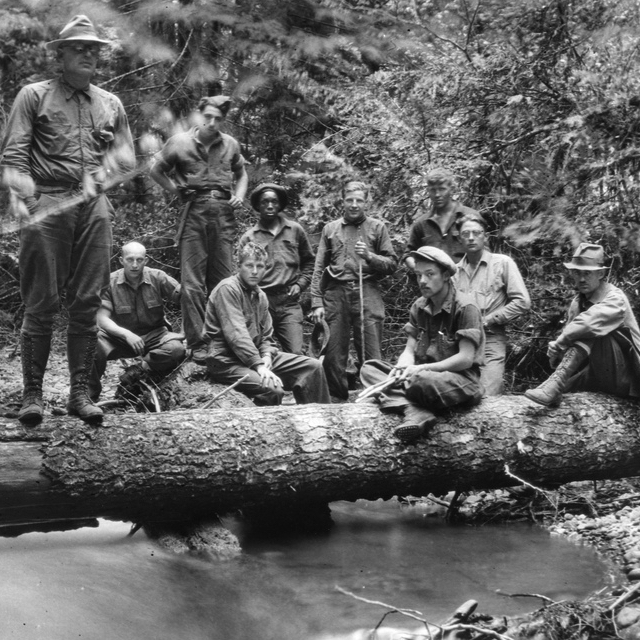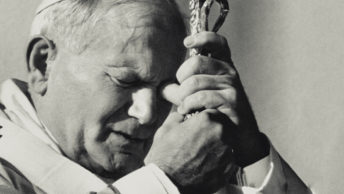The Civilian Conservation Corps was a public work relief program that operated from 1933 to 1942 in the United States for unemployed, unmarried men from relief families, ages 18 – 25. A part of the New Deal of President Roosevelt, it provided unskilled manual labor jobs related to the conservation and development of natural resources in rural lands owned by the federal, state and local governments. The CCC was designed to provide employment for young men in relief families who had difficulty finding jobs during the Great Depression. Maximum enrollment at any one time was 300,000. In 9 years 2.5 million young men participated.
Principal benefits of an individual’s enrollment in the CCC included improved physical condition, heightened morale, and increased employability. Of their pay of $30 a month, $25 went to their parents. During the time of the CCC, volunteers planted 3 billion trees to help reforest America, constructed more than 800 parks nationwide and upgraded most state parks and built a network of service buildings and public roadways in remote areas.
As governor of New York, FDR had run a similar program on a smaller scale. FDR issued Executive Order 6101 on April 5, 1933 which established the CCC. The organization and administration of the CCC was a new experiment in operations for a Federal government agency. To end any opposition from labor unions, Roosevelt picked a union official, Robert Fechner, as its first director and took William Green, head of the American Federation of Labor, to the first camp to demonstrate that there would be no job training involved beyond simple manual labor.
The typical CCC enrollee was a U.S. citizen, unmarried, unemployed male, 18 to 25 years of age. Normally his family was on local relief. Each enrollee volunteered and, upon passing a physical exam, was required to serve a minimum six month period with the option to serve as many as four periods, or up to two years if employment outside the CCC was not possible. Enrollees worked 40 hours a week over five days, sometimes including Saturdays if poor weather dictated. Each CCC camp was located in the area of particular conservation work to be performed and organized into 200 civilian enrollees in a “company” unit. At the time of entry, 70% of enrollees were malnourished and poorly clothed. Few had work experience beyond occasional odd jobs.
Responding to favorable public opinion, Congress approved a continuance of the CCC in April of 1935. The age limit was expanded to 18 to 28 years of age to include more men. The period from April of 1935 through March 1936 was the period of the greatest activity and work accomplished by the CCC program. Enrollment peaked at 505,782 in about 2,900 camps. However, on 30 June 1939 legislation ceased the CCC program as an independent agency. By 1940 the CCC was no longer wholly a relief agency, rapidly losing its non-military character, and becoming a system for work-training as its ranks had become increasingly younger. Following the attack on Pearl Harbor in December 1941 all federal programs were revised to emphasize the war effort. Most of the CCC work was shifted onto U.S. military bases to help with construction. Congress ceased funding the CCC on June 30, 1942.
By all analysis, the CCC was a successful program. Some of the more notable alumni are Hubert Humphrey, Hyman G. Rickover – 4 star Admiral, Raymond Burr – actor, Archie Moore – Light Heavyweight boxing champion, Chuck Yeager – test pilot, Stan Musial – baseball player, Walter Mathau – actor, and Red Schoendienst – baseball player and manager. Whether the United States could duplicate something like this in today’s world is something worth considering. We surely need to address some type of activity to offset the growing obesity and inactivity of today’s youth.








